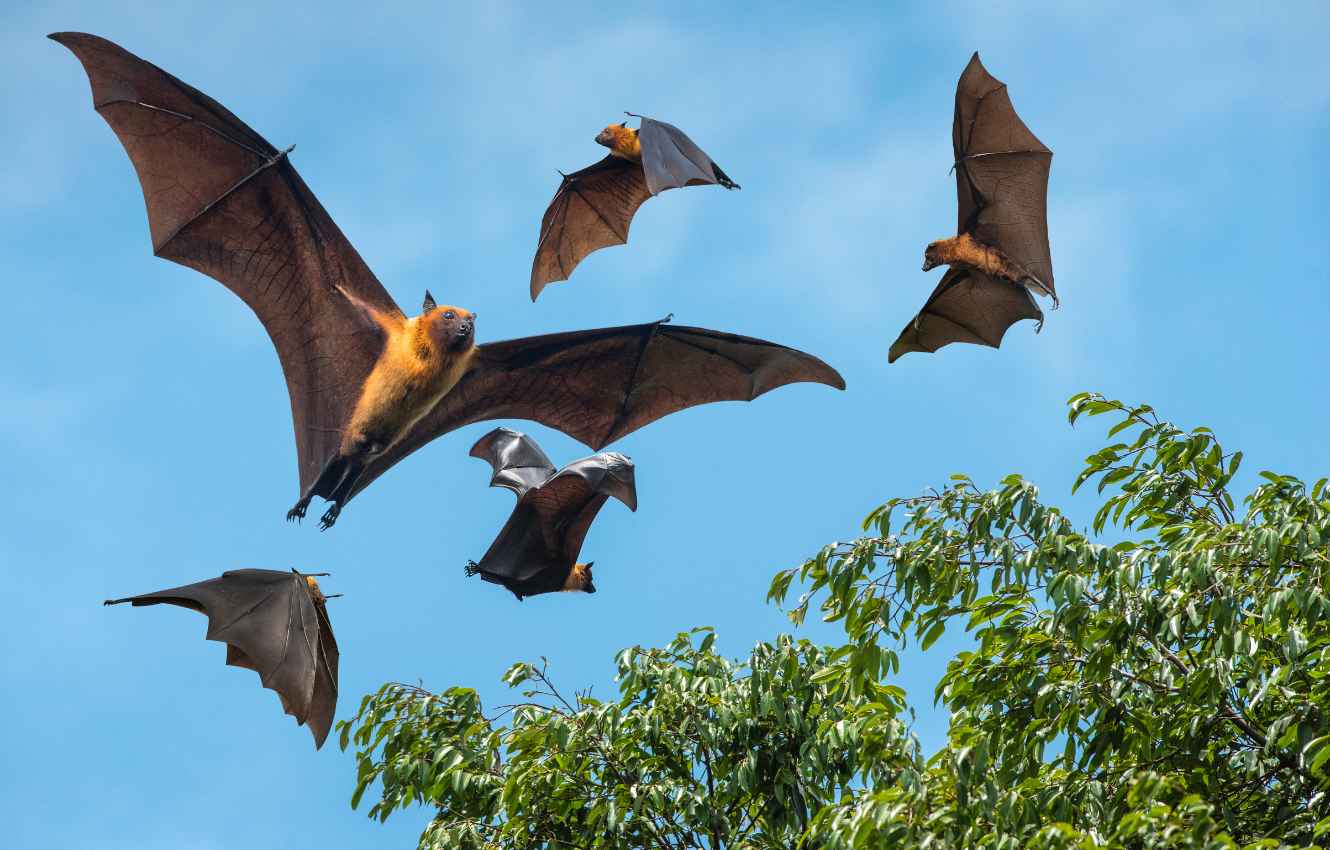Welcome to our blog article on biodiversity net gain and its role in bat conservation. In this article, we will explore the importance of ecological compensation, habitat restoration, and species protection in achieving a sustainable balance between development and nature. We will also highlight the significance of natural capital, environmental stewardship, wildlife conservation, and nature conservation in preserving our planet’s biodiversity.
Key Takeaways:
- Biodiversity net gain is crucial for achieving positive outcomes for biodiversity.
- Bat conservation plays a vital role in preserving ecosystems through pollination, seed dispersal, and insect control.
- The successful implementation of biodiversity net gain relies on robust regulations, monitoring, and enforcement.
- Balancing biodiversity net gain and bat conservation requires considering the specific needs of bats and their sustenance zones.
- Biodiversity net gain offers income diversification opportunities for landowners through habitat enhancement.
The Role of Biodiversity Net Gain
Biodiversity net gain plays a crucial role in achieving positive outcomes for biodiversity. It involves measures such as habitat restoration and creating new habitats to compensate for any ecological impacts caused by development. By implementing biodiversity net gain, we can protect and enhance important habitats and species, contribute to the overall natural capital, and promote environmental stewardship. It provides an opportunity to restore and improve the biodiversity of our ecosystems while ensuring sustainable development.
Habitat Restoration
Biodiversity net gain focuses on habitat restoration as a key strategy for conserving biodiversity. Through habitat restoration, damaged or degraded ecosystems can be revitalized, providing essential resources and habitats for a range of species. This includes restoring wetlands, forests, grasslands, and other natural habitats that are important for maintaining biodiversity.
Species Protection
Biodiversity net gain also plays a vital role in species protection. By creating new habitats and enhancing existing ones, we can provide safe havens for endangered and threatened species. This is particularly important for species that have specific habitat requirements or rely on specific ecosystems for their survival. Biodiversity net gain works hand in hand with conservation efforts to ensure the long-term viability of these species.
Natural Capital and Environmental Stewardship
Biodiversity net gain recognizes that nature has inherent value and supports the concept of natural capital. By investing in the restoration and enhancement of biodiversity, we are not only preserving our natural heritage but also promoting sustainable development. Biodiversity net gain encourages responsible land management practices and fosters a sense of environmental stewardship, ensuring that future generations can continue to benefit from the services and resources provided by healthy ecosystems.
Table: The Benefits of Biodiversity Net Gain
| Benefits |
Explanation |
| Habitat Restoration |
Restoring damaged or degraded ecosystems to provide essential resources and habitats for a range of species. |
| Species Protection |
Creating safe havens for endangered and threatened species by providing suitable habitats. |
| Natural Capital |
Recognizing the value of nature and promoting sustainable development through responsible land management. |
| Environmental Stewardship |
Fostering a sense of responsibility towards the environment and ensuring the preservation of healthy ecosystems for future generations. |

Biodiversity net gain provides a holistic approach to conservation, addressing the challenges posed by development while simultaneously enhancing our natural environment. By prioritizing habitat restoration, species protection, and the promotion of natural capital and environmental stewardship, biodiversity net gain ensures that biodiversity can thrive alongside human progress. It not only benefits wildlife and ecosystems but also contributes to the overall resilience and sustainability of our planet.
Importance of Bat Conservation
Bat conservation plays a vital role in safeguarding the delicate balance of our ecosystems. Bats, as pollinators, seed dispersers, and natural insect controllers, contribute to the overall health and sustainability of our environment. Protecting these remarkable creatures is crucial for maintaining the biodiversity and functioning of our ecosystems.
Bats are also protected species in the UK under the Wildlife and Countryside Act 1981. This designation emphasizes the need to preserve their habitats and ensure the long-term viability of bat populations. By incorporating bat conservation measures into biodiversity net gain initiatives, we can create a win-win scenario where both development and bat populations coexist harmoniously.
“The future of bat populations depends on our commitment to habitat preservation and species protection.” – Bat Conservation Trust
Why is bat conservation essential?
- Bat conservation maintains the balance of ecosystems by ensuring the persistence of pollination, seed dispersal, and natural pest control.
- Preserving bat habitats contributes to the overall biodiversity conservation efforts.
- Bats are indicators of a healthy environment and can serve as bioindicators for monitoring ecosystem health.
- Bat populations face multiple threats, such as habitat loss, climate change, and disturbances in roosting sites. Conservation efforts mitigate these risks and protect these vulnerable species from further decline.
Effective bat conservation strategies integrated into biodiversity net gain initiatives can preserve important roosting and foraging sites, enhancing the chances of bat species’ survival. By prioritizing habitat preservation and actively protecting bat populations, we invest in a sustainable future where both human development and wildlife conservation are valued and balanced.
| Benefits of Bat Conservation |
Actions for Conservation |
| Preservation of important ecological roles (pollination, seed dispersal, pest control) |
Protecting and enhancing roosting and foraging habitats |
| Contribution to overall biodiversity conservation efforts |
Implementing measures to avoid habitat loss and disturbance |
| Improved ecosystem health and resilience |
Raising awareness and promoting responsible land management practices |
Biodiversity Net Gain Regulations and Implementation
Effective implementation of biodiversity net gain requires robust regulations and thorough governance. Government policies play a pivotal role in setting out the guidelines and requirements for developers to achieve net gains in biodiversity. These regulations ensure that development projects consider the potential impacts on habitats and species, fostering a more sustainable approach to growth.
By incorporating biodiversity net gain into the planning process, developers are encouraged to prioritize the avoidance of impacts on important ecological sites and habitats. This approach reinforces the mitigation hierarchy, where measures to avoid and minimize impacts are prioritized over offsetting or compensating for losses.
However, the success of biodiversity net gain hinges on the proper monitoring, reporting, and enforcement of these regulations. Stronger requirements in these areas can help ensure that genuine gains are delivered and any breaches or non-compliance are appropriately addressed. Additionally, aligning biodiversity net gain with other strategies and policies, such as Local Nature Recovery Strategies, can amplify the positive impact on biodiversity conservation.
| Benefits of Biodiversity Net Gain Regulations and Implementation |
| Enhanced protection for irreplaceable habitats and species |
| More sustainable development practices |
| Promotion of ecological resilience |
| Contributions to overall biodiversity conservation |
| Long-term benefits for future generations |
“Biodiversity net gain regulations and implementation are essential for mitigating the adverse impacts of development on our natural environment. We need strong governance and guidance to ensure that genuine gains in biodiversity are achieved and maintained in the long term.” – Environmental Stewardship Expert
Through the effective implementation of biodiversity net gain regulations, we can strike a balance between development and the conservation of important habitats and species. This approach fosters a more sustainable future for our ecosystems and ensures the protection and enhancement of our natural heritage for generations to come.
Balancing Biodiversity Net Gain and Bat Conservation
When designing habitats for biodiversity net gain, it is crucial to consider the specific needs of bats and their sustenance zones. Bats have unique habitat requirements for roosting and foraging, and it is important to ensure that net gain measures do not disrupt their core sustenance zones. By taking into account the location and design of net gain habitats, we can maintain the viability of bat roosts and contribute to the conservation of these important species.
Guidance provided by organizations like the Bat Conservation Trust can assist practitioners in developing effective net gain outcomes for bats. They emphasize the importance of considering the ongoing viability of bat roosts when designing and implementing net gain measures. By aligning net gain habitats with the core sustenance zones of affected roosts, we can support species viability and ensure that these habitats continue to provide essential resources for bats.
Table:
| Habitat Design Considerations for Bats |
Biodiversity Net Gain Benefits |
| Preserving and enhancing important roosting and foraging sites |
Contributes to overall biodiversity conservation |
| Maintaining core sustenance zones of bat roosts |
Ensures species viability |
| Considering the specific habitat requirements of different bat species |
Promotes ecological diversity and habitat suitability |
| Implementing measures to reduce disturbance and light pollution |
Creates a favorable environment for bats |
By carefully considering the needs of bats during the design and implementation of biodiversity net gain measures, we can achieve a balance between development and bat conservation. This approach ensures that the net gain of biodiversity is achieved while safeguarding the long-term viability of bat populations. Collaboration between developers, landowners, and conservation organizations is essential in driving positive change and ensuring the protection of our precious natural heritage.
Benefits for Landowners in Biodiversity Net Gain
Landowners play a crucial role in the success of biodiversity net gain initiatives. By actively participating in habitat enhancement activities, landowners have the opportunity to not only contribute to nature’s recovery but also diversify their income channels. When developers fail to meet net gain targets on their development sites, they can collaborate with landowners to achieve their obligations. This collaboration opens up new avenues for landowners to generate income through habitat enhancement on their own land.
Implementing biodiversity net gain measures on their land allows landowners to increase biodiversity units, which can then be sold to developers to contribute towards their net gain targets. This innovative approach offers landowners an exciting form of diversification in their income channels. By engaging in habitat enhancement, landowners can enhance the ecological value of their land, promote wildlife conservation, and at the same time, generate additional revenue.
Landowners who want to benefit from biodiversity net gain can start by identifying potential net gain sites on their land.
Even small pieces of land can contribute to net gain efforts, and landowners can seek guidance from ecological experts to devise cost-effective strategies for enhancing biodiversity units. Collaborating with organizations such as Acer Ecology, landowners can gain expert advice on calculating baseline biodiversity units, implementing habitat enhancement measures, and developing long-term management plans for biodiversity net gain. These resources and support empower landowners to make a meaningful contribution to biodiversity conservation while reaping the benefits of enhanced land value and income diversification.

Benefits for Landowners in Biodiversity Net Gain
When developers fail to meet net gain targets on their development sites, they can collaborate with landowners to achieve their obligations.
Implementing biodiversity net gain measures on their land allows landowners to increase biodiversity units, which can then be sold to developers to contribute towards their net gain targets. This innovative approach offers landowners an exciting form of diversification in their income channels. By engaging in habitat enhancement, landowners can enhance the ecological value of their land, promote wildlife conservation, and at the same time, generate additional revenue.
- Identify potential net gain sites on your land
- Seek guidance from ecological experts for cost-effective strategies
- Collaborate with organizations like Acer Ecology
These resources and support empower landowners to make a meaningful contribution to biodiversity conservation while reaping the benefits of enhanced land value and income diversification.
Table: Biodiversity Units and Income Potential
| Land Area (hectares) |
Baseline Biodiversity Units |
Habitat Enhancement Actions |
Increased Biodiversity Units |
Income Potential (per year) |
| 5 |
15 |
Planting native trees, creating ponds |
25 |
£5,000 |
| 10 |
20 |
Establishing wildflower meadows, installing bat boxes |
35 |
£8,000 |
| 20 |
30 |
Creating wildlife corridors, enhancing wetland habitats |
50 |
£12,000 |
Getting Involved as a Landowner in Biodiversity Net Gain
Landowners play a crucial role in contributing to biodiversity net gain efforts. By identifying potential net gain sites on their land, they can actively participate in the preservation and enhancement of biodiversity. Undertaking a baseline assessment is the first step in this process, as it allows landowners to understand the current biodiversity units of their land. This assessment serves as a starting point for implementing habitat enhancement measures that can increase biodiversity units over time.
Even small pieces of land can make a significant difference in net gain efforts. By seeking guidance from ecological experts, landowners can develop cost-effective strategies for enhancing biodiversity units. These strategies can include measures such as creating new habitats, improving existing habitats, and providing essential resources for wildlife.
Starting habitat enhancement work early is crucial, as it allows for significant increases in biodiversity units within a few years. Landowners can actively contribute to the conservation of biodiversity while also benefiting from the diversification of income channels through habitat enhancement on their own land. By collaborating with developers and aligning their efforts with biodiversity net gain targets, landowners can make a positive impact on the environment and leave a lasting legacy for future generations.

Support for Landowners in Biodiversity Net Gain
Ecological consultancies, such as Acer Ecology, can provide invaluable support to landowners in their biodiversity net gain efforts. With their expertise and guidance, landowners can navigate the complexities of calculating baseline biodiversity units, implementing habitat enhancement measures, and developing long-term management and monitoring plans for successful net gain outcomes.
One of the key ways in which consultancies like Acer Ecology can assist landowners is by helping them determine the baseline biodiversity units of their land. This baseline assessment serves as a starting point for identifying areas of improvement and formulating effective strategies to increase biodiversity units. By accurately quantifying the existing biodiversity value, landowners can track their progress and measure the success of their net gain initiatives.
Moreover, ecological consultancies can provide guidance on cost-effective habitat enhancement measures that landowners can undertake to increase biodiversity units. These measures may include creating new habitats, enhancing existing ones, planting native vegetation, and implementing sustainable land management practices. By tailoring these actions to the specific characteristics of their land, landowners can maximize biodiversity gains and contribute positively to nature’s recovery.
In addition, consultancies like Acer Ecology can assist landowners in developing comprehensive management and monitoring plans for their net gain projects. These plans outline the long-term strategies and actions needed to maintain and enhance biodiversity on the land. They ensure that the net gain outcomes are sustained over time and contribute to the overall conservation of biodiversity in the region.
| Benefits of Consultancies for Landowners |
Examples |
| Expert guidance |
Ecological consultancies provide expert advice and guidance tailored to the specific needs of landowners, ensuring the success of their net gain initiatives. |
| Cost-effective strategies |
Consultancies can help landowners implement habitat enhancement measures that are not only effective but also budget-friendly, maximizing the return on investment. |
| Comprehensive plans |
By developing long-term management and monitoring plans, consultancies enable landowners to track progress, maintain biodiversity gains, and contribute to nature’s recovery. |
By partnering with ecological consultancies, landowners can access the expertise and support needed to successfully implement biodiversity net gain on their land. The guidance and resources provided by consultancies like Acer Ecology can empower landowners to make a meaningful contribution to biodiversity conservation while reaping the benefits of income diversification and habitat enhancement.

Example Heading 3 (if relevant)
“The support and guidance we received from Acer Ecology were instrumental in our efforts to implement biodiversity net gain on our land. Their expertise in calculating baseline biodiversity units and developing effective habitat enhancement strategies was invaluable. With their help, we were able to contribute to nature’s recovery while generating income through the enhancement of our land. We highly recommend Acer Ecology to fellow landowners looking to make a positive impact on biodiversity.”
– John Smith, Landowner
- Expert guidance tailored to landowners’ needs
- Cost-effective strategies for habitat enhancement
- Comprehensive management and monitoring plans
With support from ecological consultancies, landowners can play a vital role in achieving biodiversity net gain and contribute to the preservation and enhancement of our natural environment.
Conclusion
Biodiversity net gain and bat conservation are crucial for the preservation and enhancement of our ecosystems. By implementing biodiversity net gain measures that consider the specific needs of bats, we can strike a balance between development and the conservation of important habitats.
Landowners have a unique opportunity to contribute to biodiversity net gain efforts while benefiting from income diversification through habitat enhancement. Collaborative efforts between developers and landowners can drive positive change and ensure the long-term viability of bat populations.
Together, we can actively protect our natural environment, preserve habitats for bat species, and promote environmental stewardship. Let’s work hand in hand to leave a positive legacy for future generations by conserving biodiversity and protecting the precious species that depend on it.
FAQ
What is biodiversity net gain?
Biodiversity net gain involves measures such as habitat restoration and creating new habitats to compensate for ecological impacts caused by development. It aims to protect and enhance important habitats and species, contributing to overall natural capital and promoting environmental stewardship.
Why is bat conservation important?
Bats play vital roles in pollination, seed dispersal, and insect control. They are also protected species in the UK, and preserving their habitats is crucial for maintaining their populations and overall biodiversity conservation.
What are the regulations and implementation of biodiversity net gain?
The Bat Conservation Trust emphasizes the importance of supporting and delivering biodiversity net gain with the right regulations, guidance, governance, metric, resources, data, and expertise. The implementation should reinforce the mitigation hierarchy and prioritize the avoidance of impacts on important habitats and nature sites.
How can biodiversity net gain be balanced with bat conservation?
When designing biodiversity net gain measures, it’s essential to consider the specific needs of bats and their sustenance zones. The location and design of net gain habitats should ensure the viability of affected roosts. Guidance from organizations like the Bat Conservation Trust can assist in developing effective net gain outcomes for bats.
What are the benefits of biodiversity net gain for landowners?
Biodiversity net gain offers an opportunity for landowners to diversify their income channels. When developers fail to meet net gain targets, landowners can collaborate by enhancing biodiversity units on their land and selling them to developers. This allows landowners to contribute to nature’s recovery while generating income through habitat enhancement.
How can landowners get involved in biodiversity net gain?
Landowners can start by identifying potential net gain sites on their land and conducting a baseline assessment to establish current biodiversity units. They can seek guidance from ecological experts to develop cost-effective strategies for enhancing biodiversity units, even on small pieces of land.
Is there support available for landowners in biodiversity net gain?
Ecological consultancies, such as Acer Ecology, can provide support to landowners in their biodiversity net gain efforts. They can assist in calculating baseline biodiversity units, provide guidance on enhancing biodiversity units, and help develop long-term management and monitoring plans.
Why is biodiversity net gain important for habitat preservation and species protection?
Biodiversity net gain plays a crucial role in preserving and enhancing ecosystems. By implementing measures that consider the specific needs of bats and other species, we can strike a balance between development and the conservation of important habitats, ensuring the long-term viability of species.
Source Links






















Post comments (0)